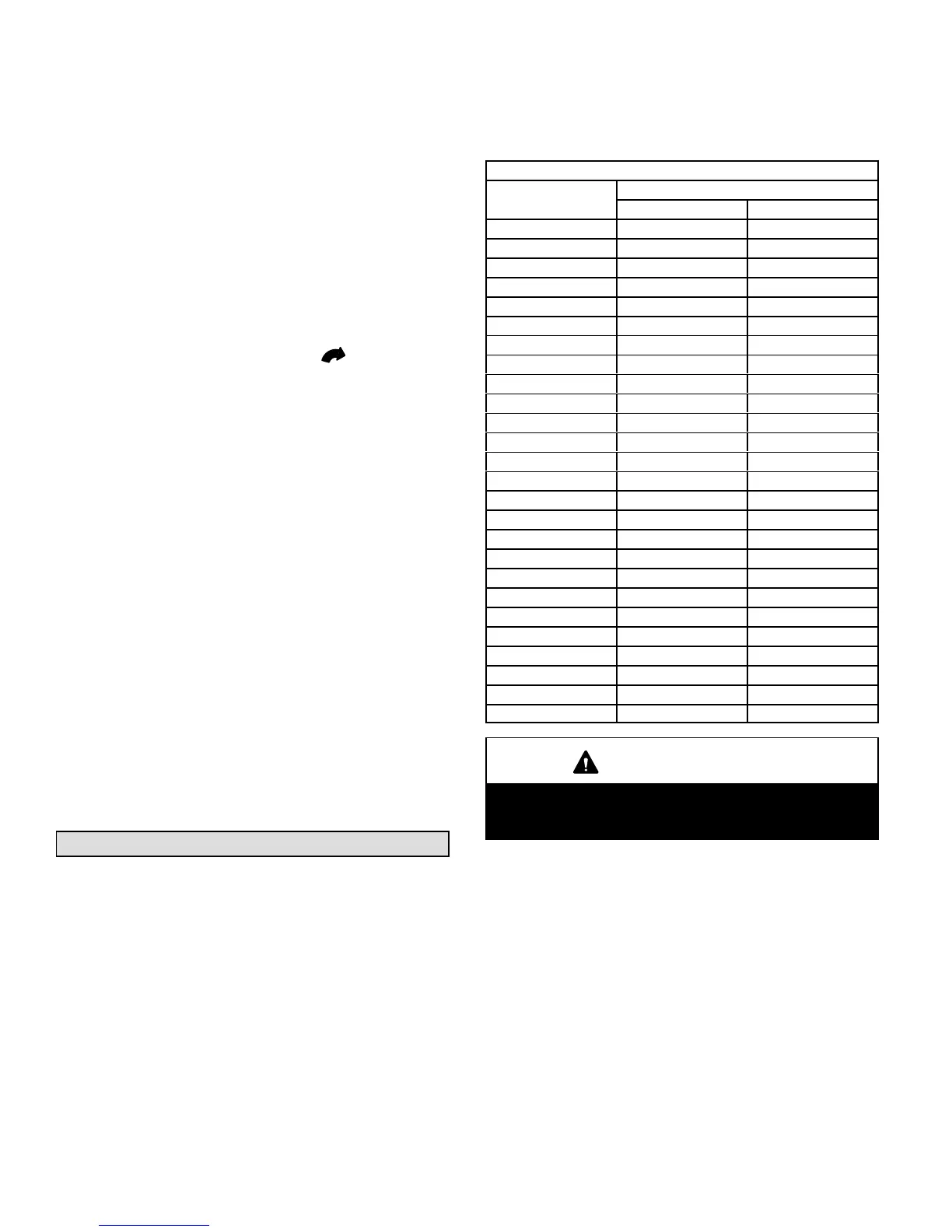Page 24
10− Turn on all electrical power to to the unit.
11− Set the thermostat to desired setting.
NOTE − When unit is initially started, steps 1 through 11
may need to be repeated to purge air from gas line.
12− If the appliance will not operate, follow the instructions
Turning Off Gas to Unit" and call the gas supplier.
Turning Off Gas to Unit
1 − Set the thermostat to the lowest setting.
2 − Turn off all electrical power to the unit if service is to be
performed.
3 − Remove the upper access panel.
4 − Honeywell VR8205 Gas Valve with ON/OFF Switch
− Move gas valve switch to OFF. See figure 22.
Honeywell VR8205 Gas Valve with Control Knob −
Turn knob on gas valve clockwise to OFF. Do not
force. See figure 23.
White Rodgers 36G Gas Valve − Move gas valve
switch to OFF. See figure 24.
5 − Replace the upper access panel.
Heating Sequence Of Operation
When thermostat calls for heat, combustion air inducer
starts.
Combustion air pressure switch proves combustion air
inducer operation. Switch is factory set and requires no
adjustment.
After a 15 second prepurge, the hot surface igniter en-
ergizes.
After a 20 second igniter warm−up period, the gas valve
solenoid opens.
Gas is ignited, flame sensor proves the flame, and the
combustion process continues.
If flame is not detected after first ignition trial, the igni-
tion control will repeat steps 3 and 4 four more times
before locking out the gas valve (WATCHGUARD"
flame failure mode). The ignition control will then auto-
matically repeat steps 1 through 6 after 60 minutes.
To interrupt the 60−minute WATCHGUARD" period,
move thermostat from Heat" to OFF" then back to
Heat." Heating sequence then restarts at step 1.
Gas Pressure Adjustment
Gas Flow (Approximate)
1 − Operate unit at least 15 minutes before checking gas
flow. Determine the time in seconds for one revolu-
tions of gas through the meter. A portable LP gas me-
ter (17Y44) is available for LP applications.
2 − Compare the number of seconds and the gas meter
size in table 12 to determine the gas flow rate. Multiply
the gas flow rate by the heating value to determine the
unit input rate. If manifold pressure is correct and the
unit input rate is incorrect, check gas orifices for proper
size and restriction.
3 − Remove temporary gas meter if installed.
NOTE − To obtain accurate reading, shut off all other gas
appliances connected to meter.
TABLE 12
Gas Flow Rate (Ft.
3
/Hr.)
Seconds for 1
Revolution
Gas Meter Size
1/2 cu ft Dial 1 cu ft Dial
10 180 360
12 150 300
14 129 257
16 113 225
18 100 200
20 90 180
22 82 164
24 75 150
26 69 138
28 64 129
30 60 120
32 56 113
34 53 106
36 50 100
38 47 95
40 45 90
42 43 86
44 41 82
46 39 78
48 38 75
50 36 72
52 35 69
54 33 67
56 32 64
58 31 62
60 30 60
IMPORTANT
For safety, shut unit off and remove manometer as
soon as an accurate reading has been obtained.
Take care to replace pressure tap plug.
Gas Pressure
1 − Check the gas line pressure with the unit firing at maxi-
mum rate. A minimum of 4.5 in. w.c. for natural gas or
11.0 in. w.c. for LP/propane gas should be maintained.
2 − After the line pressure has been checked and ad-
justed, check the manifold pressure. A natural gas to
LP/propane gas changeover kit is required to convert
the unit. Manifold pressure for all units fueled by natu-
ral gas at all altitudes is 3.5" w.c. Manifold pressure for
all units fueled by L.P./propane gas at all altitudes is
10.0" w.c. See figures 22, 23 and 24 for the location of
the manifold pressure adjustment screws.
